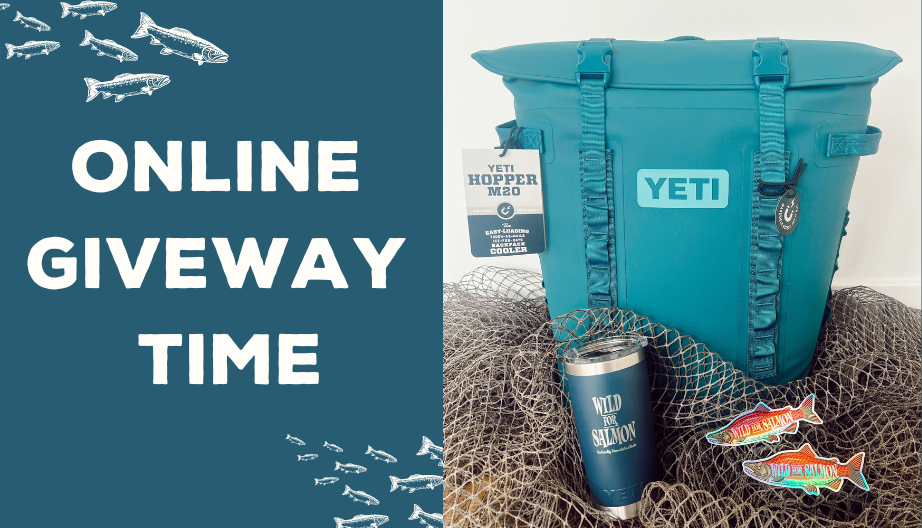 When the world went on lockdown because of the COVID-19 virus something special happened- people began to pull the cooking genes out of their bones again, I wondered how I could support the resurrection of homemade food, starting with something as simple as Cajun Shrimp and Wild Rice.
When the world went on lockdown because of the COVID-19 virus something special happened- people began to pull the cooking genes out of their bones again, I wondered how I could support the resurrection of homemade food, starting with something as simple as Cajun Shrimp and Wild Rice.What the coronavirus made clear was that our society could no longer rely on thin, nameless, global supply chains. As someone who has devoted my career to tracing the source of ingredients, and unearthing the hardworking hands and stories behind food, I felt I had something to offer.
Starting with Wild For Salmon, I want to help my readers not only rediscover the joy of cooking, but also to recall the most basic human skill: hunting for food. Real food. I want to show you how anyone can shop for quality ingredients that represent a healthier, more equitable food system. I want to show how intentional spending can help fuel a growing web of family farmers, fishermen, and foragers devoted to stewarding, not raping, the land for generations to come. I want to help build local and sustainable distribution networks that serve every community across the country, eliminating food deserts across America. And I want to use food as a universal megaphone for changemakers leading the way to a more beautiful world.
An exciting part of our work at Wild for Salmon is meeting great people who are doing interesting things. From fishermen to filmmakers to bloggers to chefs.
And what we love to do, in addition to catching wild salmon, is introduce you to them. It's nice to spread the word and share the wealth.
In keeping with that approach it's our pleasure to introduce you to Emma Frisch of the food blog emmafrisch.com.
Emma is so many things it’s a bit tough to tie her down! She lists herself as a mama, a cookbook author, the co-founder of Firelight Camps (a glamping destination in Ithaca, NY), and a chef. She also competed as a top finalist on Food Network Star. And she’s an identical twin and backcountry guide!
Here’s what we think you’ll love most about Emma - she cooks fresh, simple and seasonal. Which makes us so happy to feature her guest blog here on WildforSalmon.com, complete with recipes! Dig in for the deliciousness!
So let’s begin.
“Growing up in Alaska, I learned you can’t rely on consistency. In the summer, it was daytime all day. We picked wild raspberries, built forts and rode our bikes until 10:30 at night. In the winter we burrowed through tunnels of snow to school. We didn’t look at someone else’s backyard and wish we had that. Our family had a river and woods, my friend’s family had grass. In Alaska, I learned you can’t try to change the way things are. It taught me to be centered in myself. Now, living in L.A. is constantly busy, and there’s upheaval, like forest fires. But my girls and I are centered in ourselves. We know that whatever happens, change is expected, and it’s cool.” - Mirage Thrams, Write, director, Instructor, Actress
Cajun Shrimp
My recipes are always inspired by a person or place, and the inspiration for Cajun Shrimp came from an unlikely place: my online Stand-Up Comedy Class. When I first met my teacher, Mirage Thrams, I instantly liked her. She was warm and bold at once, and had a directness softened by motherly compassion and humor. Her intuition was uncanny. She had me pinned within seconds; “you seem like someone who I would trust to tell me what I should and shouldn’t eat.”
As is usually the case when I meet a trailblazing woman and mother, I was itching to get to know Mirage. A small window opened when I learned that Mirage was raised in Alaska, where Wild For Salmon harvests the majority of their seafood and for which I was about to create a recipe using their wild shrimp (one of the few products that Wild for Salmon sources from the Louisiana Gulf).
Amidst the insanity of our lives as working moms, without childcare, we managed to find a time to connect by phone. I asked if she had a favorite shrimp recipe. Her response was not what I expected.
“Well, I didn’t try my first shrimp until I was a grown-up, living in the Lower 48!” Mirage was raised Seventh Day Adventist, a mashup of Christian religion and Jewish practices, which banned shrimp and pork from their diet. She would always ask her friends what shrimp tasted like, until one day, free from the religious buckles of her childhood, she tried Shrimp Cocktail.
“It sounded elegant, and it was ok. But then I discovered Cajun Shrimp (recipe below) and fell in love with that!” For a period of her life, Mirage ordered takeout Cajun Shrimp every day, while her girls ate something else for dinner. I laughed, all too familiar with the experience of eating something I found insatiably good (like anchovies on pizza), that my daughters wouldn’t touch with a ten-foot pole.
Food is a portal into the human soul, and our conversation about Cajun Shrimp quickly rewound into Mirage’s powerful life story, a convergence of comedy and activism, beginning in Alaska.
Family-Friendly Cajun Shrimp Casserole
I couldn’t think of a more perfect recipe to highlight Wild For Salmon’s White Gulf Shrimp from Louisiana, the state renowned for Cajun seasoning, than this one.
As a working mother, I’m always trying to create a one-pot dish that packs in vegetables, protein, whole grains, and plenty of flavor. So I decided to make a dish bordering on a shrimp casserole, but skipping the baking time in the oven.
If your kids aren’t fans of Cajun rice and prefer plain rice, you can always leave the Cajun seasoning out of the rice preparation; when the rice is finished, separate some out for the kids and sauté the remaining rice with a healthy spoonful of Cajun seasoning along with the finished shrimp.
What is Cajun Seasoning?
Ever since my twin sister went to college at Tulane, I’ve always associated Cajun cuisine with New Orleans. Just like the city, Cajun food is vibrant, colorful, and flavorful. So much so that with each bite you just might forget you’re still in America. That’s because Cajun seasoning was introduced by immigrants, like most other monumental dishes that symbolize great American fare.
Creme De La Crumb summarizes its history: “Cajun is a word used to describe the Acadians, who were the French colonists who first settled in a region of Canada known as Acadia. Eventually, the Acadians were moved out of Canada by the British in the early 1700s and they migrated waaay down south to Louisiana. Because they didn’t have refrigerators, Cajuns learned to use every part of their animals for food and also used smoking and splicing techniques for preserving their foods. Cajun food is basically interpreted to mean “heavily seasoned” — which doesn’t always mean spicy, but often is anyway because of the heavy use of cayenne pepper in a lot of recipes.”

Homemade, Kid-friendly Cajun Seasoning
I scoured the web for Cajun Seasoning recipes, and landed on a mild variation inspired by Emeril Lagasse. Just a hint of cayenne keeps this recipe from being too spicy for kids, and the smoked paprika adds a primal flavor. You can easily substitute with regular paprika if desired. Mix the following ingredients in a small container, and store the extras for your next Cajun meal!
The Key to Cooking Tender, Seared Shrimp
Raise your hand if you’ve had overcooked, rubbery shrimp that leaves your jaw sore from chewing? (Me too.) Slender Kitchen walks us through the keys to cooking delicious, tender, non-rubbery shrimp:
- - Start with a hot pan so the shrimp begin to sear as soon as they go in
- - Don’t overcrowd the pan; the shrimp need space to sear, not steam
- - Cook the shrimp 2-3 minutes per side and remove them from the pan as soon as they’re opaque. Remember, they will continue to cook once removed from the pan.
How to Grill Cajun Shrimp
Another delicious way to make Cajun Shrimp is to grill them, especially this time of year. You can grill them on skewers, especially if they are small and risk falling through the grill grate, or directly on the grill if they are large enough.
If using skewers, soak them in cold water for 15 minutes to prevent the skewers from burning over the fire. Next, coat the raw, thawed shrimp with the olive oil and Cajun seasoning as described in the recipe below. Let the shrimp marinate while you fire up the grill or campfire.
You’ll want a high-heat fire with flames directly under the grill grate. Once the fire is ready, thread the shrimp on the skewers and place them on the grate. Cook for 1-2 minutes on each side, until the shrimp are charred and become opaque. Rasa Malaysia has a mouthwatering recipe for Honey Cajun Grilled Shrimp.
Fresh Versus Frozen Seafood
There’s a popular myth that fresh seafood is better than frozen. Unfortunately, unless you’re eating seafood fresh off the boat or from a seaside market or restaurant, seafood rarely lives up to the word “fresh” in supermarkets. On the contrary, it has likely traveled miles and/or been thawed for days by the time it hits the seafood counter, sacrificing nutrition, flavor, color and texture.
Wild for Salmon freezes seafood at peak harvest, preserving all of these characteristics. You can read in detail why they value transparency around their harvesting, processing, storage and transportation practices, and why they stand by the taste and quality of once-frozen seafood. The other benefit to buying frozen seafood is that you always have pre-portioned, nutrient dense, flavor-bursting protein in stock!
How to Thaw Frozen Shrimp
The best way to thaw frozen shrimp is overnight in the refrigerator. However, if you forget to do this, don’t sweat. Transfer the frozen shrimp to a bowl of cold water. Let the shrimp sit for 15 minutes and then drain the water. Cover with fresh cold water and break apart any shrimp that are stuck together. After 15 minutes, drain in a colander and set the colander over a shallow bowl to continue draining. Place in the refrigerator until ready to use. Fine Cooking also recommends leaving the shrimp in a bowl of cold water with a trickle of water going into the bowl, but I believe my method preserves water use and yields the same results.
The Health Benefits of Shrimp
As someone struggling with thyroid issues, shrimp are one of my favorite foods. Most humans are deficient in iodine, essential for healthy thyroid function. This is a result of a largely landlocked diet, sparse in seafood. Not only do shrimp have a particularly high iodine content, according to Healthline, they also contain 50% of our daily needs for selenium, among 20 different vitamins and minerals packed into each bite. Learn more about the health benefits of shrimp, including nutrition and calories, at Healthline.
[[ recipeID=recipe-9l4h8nxh3, title=CAJUN SHRIMP AND WILD RICE BY EMMA FRISCH ]]
 Wild Alaska Salmon
Wild Alaska Salmon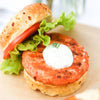 Alaska Salmon Burgers
Alaska Salmon Burgers Smoked Salmon & Seafood
Smoked Salmon & Seafood Wild Alaska Whitefish
Wild Alaska Whitefish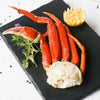 Wild Shellfish & Shrimp
Wild Shellfish & Shrimp Wild Albacore Tuna
Wild Albacore Tuna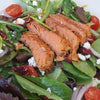 Canned Seafood
Canned Seafood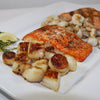 Meal Box & Samplers
Meal Box & Samplers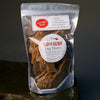 Pet Products
Pet Products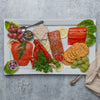 Gifts
Gifts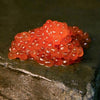 Specialty
Specialty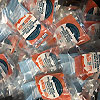 Wholesale Ordering
Wholesale Ordering